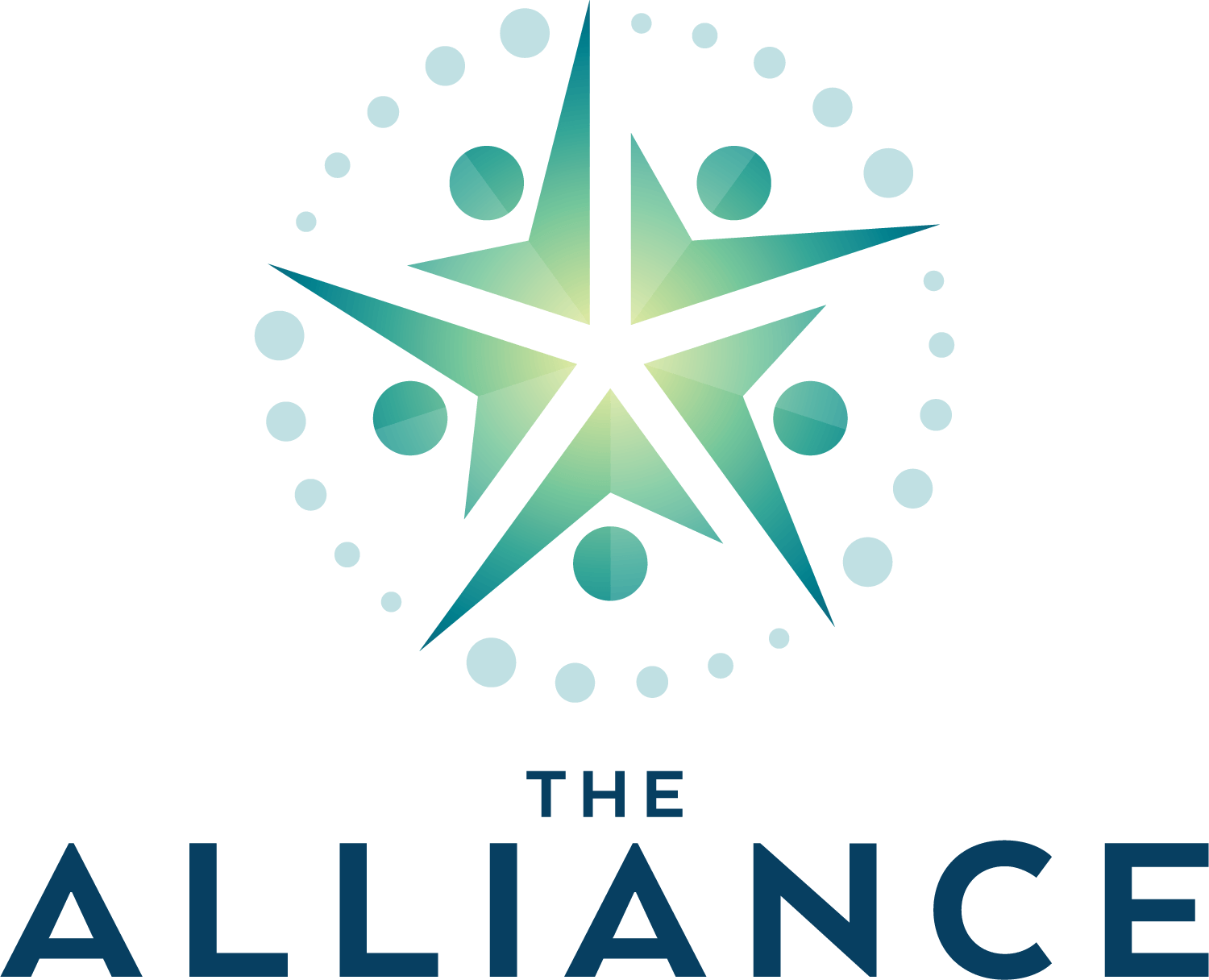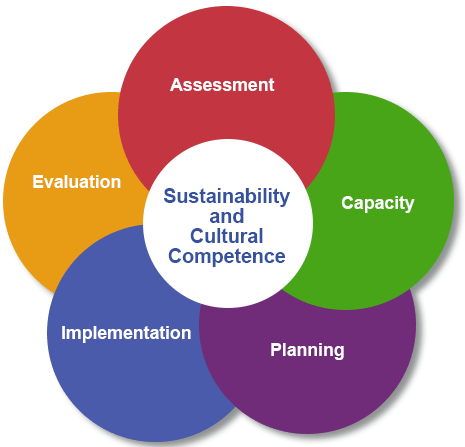Guiding Frameworks
The Alliance is a collaborative effort of multiple and diverse partners across Alaska who recognize the impacts of alcohol misuse on individuals and communities. We are personally and professionally committed to working together to address this complex problem in our state.
Our primary goal is to connect and engage communities as partners — increasing protective factors, reducing risk factors, and changing social norms — to prevent underage alcohol use and eliminate adult misuse in Alaska.
These are not the definitive list of Guiding Frameworks for the Alliance, but they were all introduced in the Fall Meeting and can be useful for a common analysis of the work. The Alliance may choose these as guiding frameworks, and others can be introduced and accepted at any time the Alliance decides.
The Strategic Prevention Framework
The Collective Impact Framework
Collective impact is a network of community members, organizations, and institutions who advance equity by learning together, aligning, and integrating their actions to achieve population and systems-level change.
It was established that collective impact work is best suited for wicked problems located in the highly complicated and complex realm of challenges. Wicked problems are those that no one organization can address alone and ones that cannot be solved by increasing human and financial resources. Wicked problems require system leadership as well as coordination among sectors and organizations.
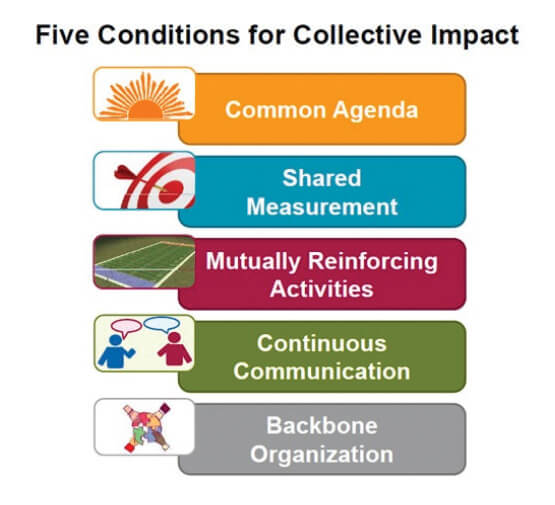
The Cynefin Framework
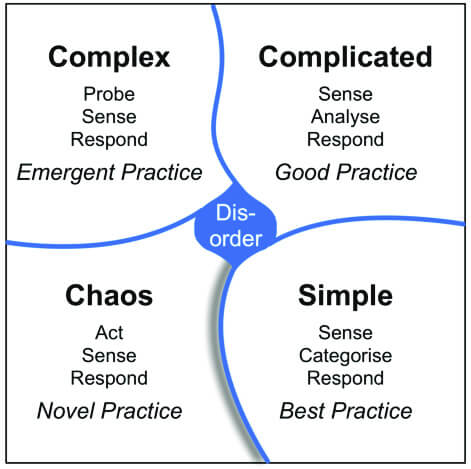
Upstream Prevention Framework
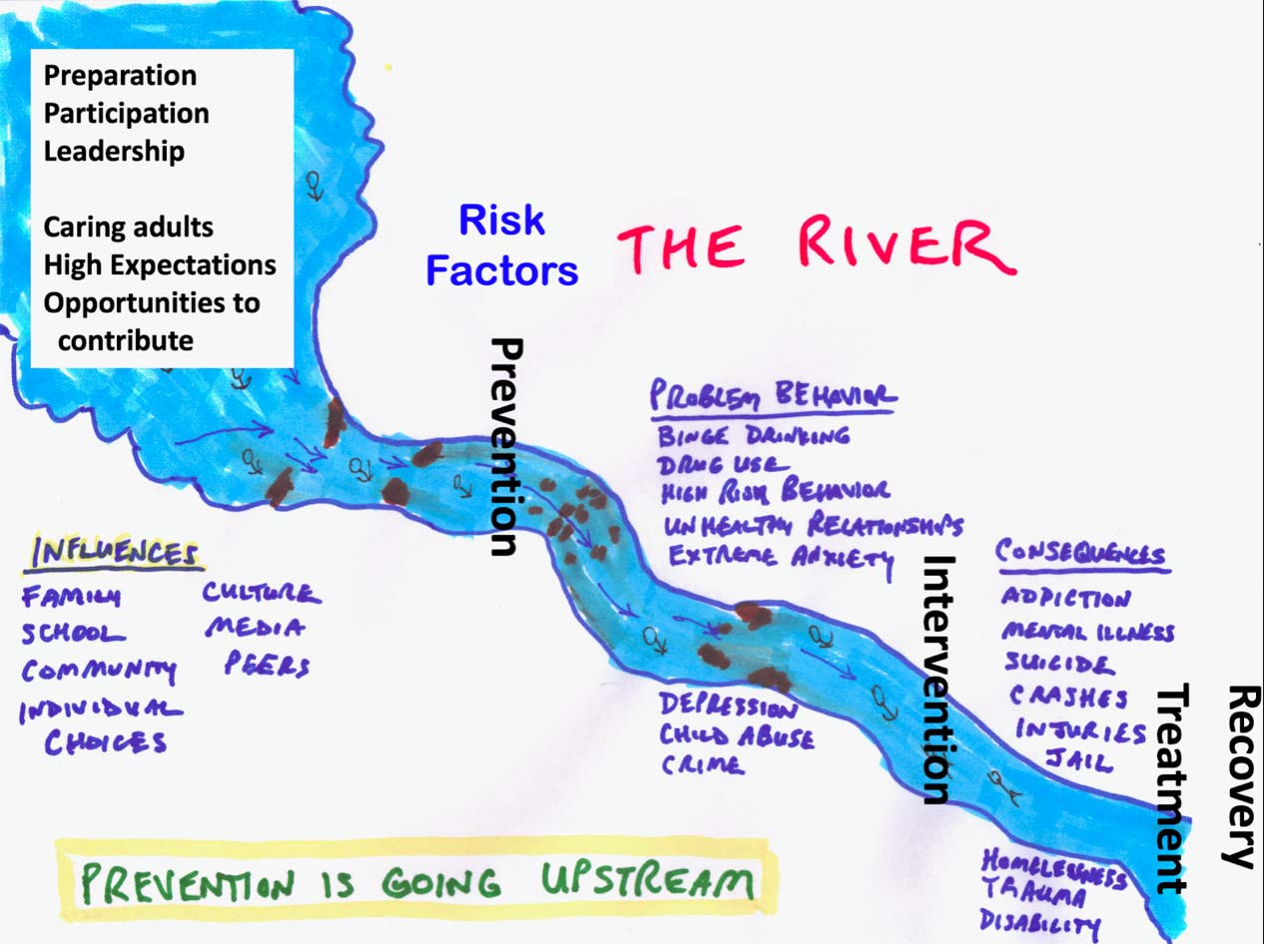
This image of upstream prevention was provided by Michael Kerosky.
The upstream prevention framework is based on a story of a community that continues to notice individuals floating down a river. They invest a lot of time and resources pulling people out of the water when someone asks- how are they getting into the river in the first place? By going upstream, community members and prevention providers can determine what approaches will reduce risk factors of people falling in the river in the first place by increasing protective factors.
An example of a risk factor are adverse childhood experiences or social determinants of health at the individual and systemic levels. An example of a protective factor is healthy connection, relationship and belonging. For more information on risk factors, protective factors, and shared factors that cut across multiple priority issue areas, please visit the Shared Risk and Protective Factors, Alaska website.
Systems change framework

Systems change can simply be described as shifting the conditions that are keeping systems stuck. In practice, moving the levers at each of the three levels of change (structural, relational, and transformative) is much more difficult. Systems are complex and many of the conditions, particularly those at the semi-explicit and implicit levels, are invisible by design. These means we tend to find ourselves solving problems in cycles, but never addressing the root causes of those problems. Systems change framework addresses the complex nature of our most “wicked” problems in a way that builds trust and causes less harm. This framework is described more fully in the document, “The Water of Systems Change.”
To fully embrace change, those in positions of power must be prepared to see how their own ways of thinking and acting must change as well. Daily Practices of Systems Leaders, summarized by Leah Ferguson, is a single-page guide to the conditions that are present in transformative, systems-shifting leaders.
Emergent Strategy principles

